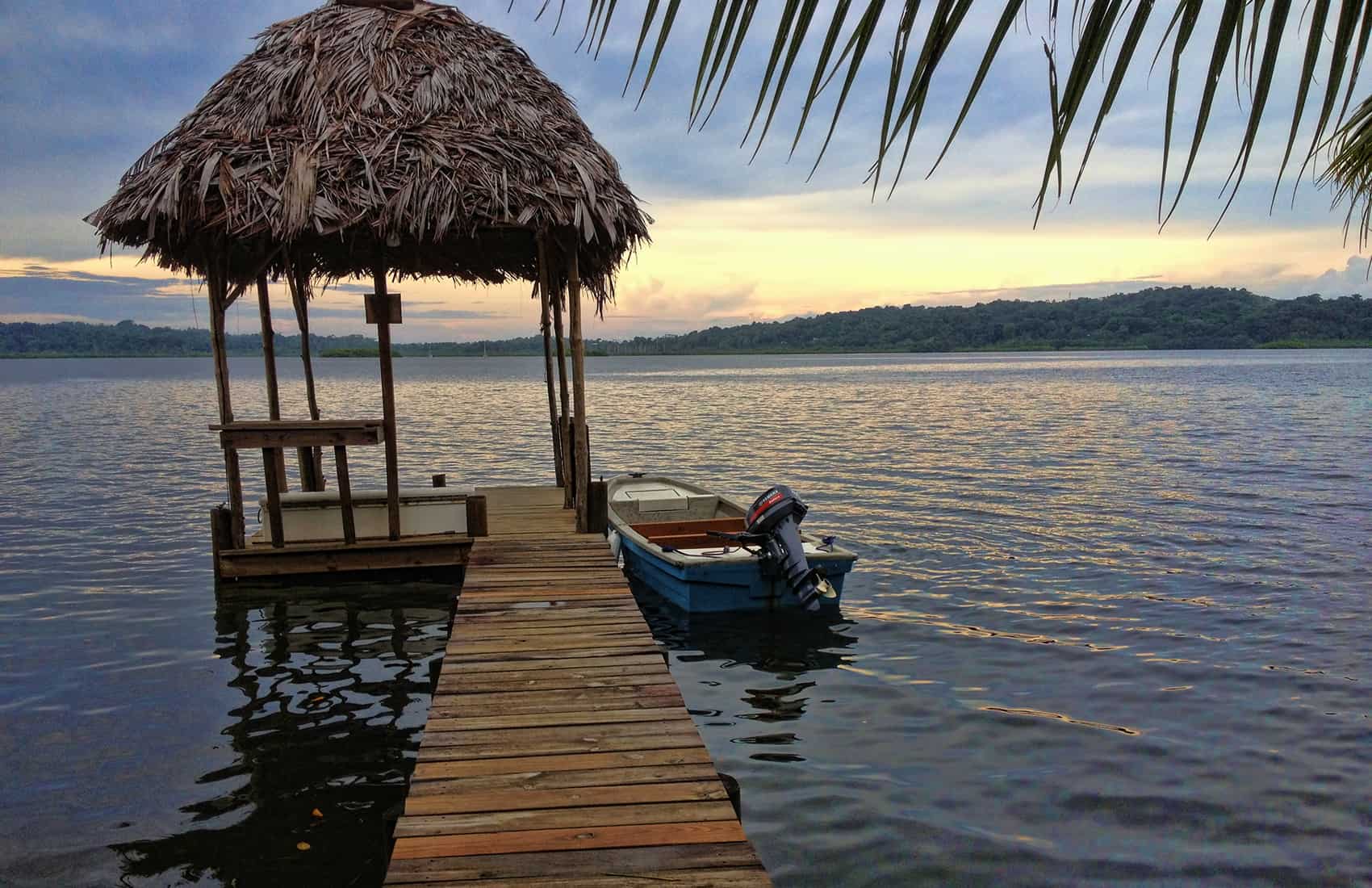Bocas del Toro is the ideal setting for a tropical postcard. Clear, sapphire water gently laps against the shore. Beaches are sugar white. Palm trees sway in the warm breeze. Monkeys howl. Miniature red frogs hop atop fallen almond leaves.
Pictures taken here, even by a novice photographer, are postcard-worthy. It might be a shot of dolphins jumping in the air above a multihued reef, or a white, bulbous jellyfish as it methodically pushes past your boat. Perhaps the purple and orange starfish lying in shallow azure waters will do the trick.
Whatever aquatic image you equate with paradise, it is likely to be found in Bocas del Toro, the island archipelago in northwestern Panama, near the Costa Rican border. Among the waters, beaches and reefs of the archipelago, which includes more than 50 cays and 200 islets, almost any recreational water-related activity is readily available. Surfing, snorkeling, scuba diving, kayaking, spearfishing, sportfishing, sailing, Jet Skiing, water-skiing, and stand-up paddle surfing are all offered here.
“These islands are a marine wonderland, a real-life aquarium,” said Rigoberto Torres, a guide on Isla Colón, the main island of Bocas del Toro. “You can put on flippers and swim right off the dock into coral reef where there are striped fish, jellyfish, crabs, lobsters, dolphins, stingrays, starfish and turtles. Like I said, a real-life aquarium.”
The abundance of marine life that swims among the bountiful island reefs has helped make Bocas del Toro one of Panama’s most popular tourist destinations. But the islands weren’t always considered a heavenly destination. According to locals and longtime residents of the islands, tourism didn’t arrive until after a massive magnitude-7.7 earthquake wiped out dozens of homes and killed several residents in 1991. In the aftermath of the earthquake, which also rattled the entire Caribbean coast of Costa Rica, aid workers came to care for injured residents and restore damaged homes and neighborhoods. It was during those visits that outsiders first became aware of the beauty of the islands.
“At that time there were no paved roads, no hotels and no tourists. The people were almost entirely poor farmers and fishermen,” Torres said. “After the quake, tourism arrived. Since then, we’ve built roads, homes, hotels and restaurants. If it hadn’t been for the earthquake, we’d still be doing what we were 20 years ago.”
On Isla Colón, tourism is king. A small airport has been built, hostels and hotels line the main street through the small downtown, and taxis and tourism operators are just about everywhere you look. Fortunately for visitors, hotels, food and tours are reasonably priced, and anyone from the hostel-hopping backpacker to the luxury traveler can find what they are looking for.
Three highly regarded hotels of Isla Colón are the Palma Royale, Tropical Suites and Playa Tortuga. The Palma Royale Hotel & Suites offers ocean views from room balconies, luxury suites with wood floors, marble bathrooms, king and queen beds and full kitchens. Prices range $80-$200 per night, depending on the room and season.
Tropical Suites is a large, white mansion right on the water. Suites have full kitchens, large balconies overlooking the ocean and king beds. The hotel has docking slips immediately off the back porch. Room rates are $139-$225 per night, depending on the season.
Playa Tortuga Hotel and Beach Resort is perhaps Isla Colón’s most family-friendly resort. The large complex is about a five-minute drive from downtown, removed from the heart of the island’s tourism scene. Playa Tortuga offers large rooms with king or queen beds, back patios and flat-screen televisions. Just beyond the back patios is a large infinity pool, immediate access to the beach, a bar and restaurant that hovers over the water, and lawn chairs shaded by thatch umbrellas. Rates are $95-$250, depending on the room and season.
There are savory eats in Bocas del Toro as well. Local restaurants are rich with Caribbean cuisine such as coconut-seasoned rice and beans, soups, salads and, of course, fish and seafood staples. Some of the most recommended restaurants on the islands are El Pecado, Sol y Sombra and Yarisnori.
El Pecado, in the Hotel Laguna is a renowned seafood spot that offers Mexican, French, Lebanese and Thai dishes. Sol y Sombra offers Italian, Greek, Caribbean and Asian dishes, while Yarisnori (507-6613-1934) is known for having the best variety of seafood on the islands, serving up octopus, shrimp, lobster and several types of fish. As for more humble local restaurants, the Pirate or Pirata and The Reef are traditional Caribbean eateries with fresh catches and cold Panamanian beer.
Lodging and grub, however, typically play second fiddle to the outdoor and water-based activities available on the islands. The easiest way to get a feel for the islands is to take a basic tour around them, offered by almost every tour operator on Isla Colón, for $20-$30. The daylong tours provide quick visits to Bocas del Toro’s main tourism spots, while stopping intermittently to let guests hop in the water and snorkel at stunning rainbow-colored reefs. Some of the best-known tourist locations are the famed Red Frog Beach on Isla Bastimentos, Hospital Point just off Isla Solarte and Cayo Coral, a majestic, must-see snorkeling spot. The lesser-known Isla Popa and Isla Cristóbal are also rife with natural wonders.
Most everything in Bocas town on Isla Colón is within walking distance, but taxis are inexpensive, as are water taxis to get to the other islands.
Why settle for a postcard when you can go make one of your own?






